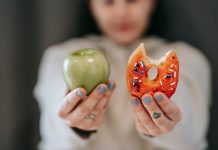A child won’t always eat what you want, as anyone who has ever tried to feed one will attest. It’s hard to try to find out what to create to feed their small bodies. And your kids might not even eat what is provided to them. Nonetheless, children require a diet rich in nutrients, including all the vitamins and minerals found in veggies, calcium for strong bones, and healthy fats for their brains.
We’ve put up a list of the top 10 healthiest foods for kids and expert advice for mealtimes to help you reduce stress and make sure your child is eating nutrient-dense foods. Not only are these kid-friendly meals nutritious, but they’re also very adaptable and simple to make.
1. Yogurt
“It’s a healthy, filling snack that checks the boxes on protein and vitamin D, a nutrient many kids lack in their diet.” Check the vitamin D content of the yogurt you purchase, as not all brands include it.
Probiotics, or beneficial bacteria, are also found in yogurt and are crucial for preserving intestinal health. Are you trying to find a simple technique to choose a nutritious yogurt? Invest in plain Greek yogurt, which offers twice the protein of normal yogurt and no added sugars. The majority of flavored yogurts contain added sugar; nevertheless, plain yogurt is usually a safe choice. Some new products only contain fruit flavoring. You may easily add flavor yourself by making a fruit parfait or by topping it with whole-grain cereal and berries.
2. Avocado
Avocados are a great method to introduce healthy fats into your child’s diet and are packed with health benefits. They include a lot of monounsaturated fats, which lower inflammation and maintain normal cholesterol levels. Fat keeps kids fuller for longer since it passes slowly through the digestive system. But what makes avocados the best? Their adaptability. You may eat them straight from the spoon, mash them on toast, blend them into a smoothie, add them to tuna or chicken salad, or use them to make a pesto-style pasta sauce.
3. Sweet Potato
Lacking time and in need of something nourishing? Clean a sweet potato, pierce it with a fork, and microwave it for three to five minutes, depending on its size. Scoop it onto your child’s plate after slicing it lengthwise and allowing it to cool.
No matter how old your child is—six months, six years, or sixteen—sweet potatoes are a universal favorite. According to the USDA, they are rich in beta carotene, which the body needs to produce vitamin A, fiber, and potassium. Consuming enough potassium maintains heart health and blood pressure.
4. Berries
Berries are abundant in vitamin C and other antioxidants like anthocyanins, and one cup has four grams or more of fiber. Strawberries, blackberries, and blueberries have less sugar than many other fruits. Youngsters can enjoy fresh berries as a snack or as a wonderful topping for yogurt. Purchase frozen berries without added sugar and include them into a smoothie or jar of overnight oats if berries aren’t in season.
5. Whole Grains
Fiber, which is often missing in children’s diets, is provided by whole grains. Fiber provides additional health benefits, such as helping them feel full and regular. Although many snacks only contain 1-3 g per serving, kids need roughly 25 g per day. In the ingredients list, look for whole grains or 100% whole wheat, along with three to five grams of fiber per serving.
Whole-wheat bread, brown rice, oatmeal, whole-wheat pasta, and whole-wheat tortillas are examples of high-fiber whole-grain foods for children. Try half-whole-wheat, half-white spaghetti if your children won’t eat whole-wheat pasta. Additionally, you can use whole-wheat flour or white whole-wheat flour for pizza dough, pancakes, and cookies.































